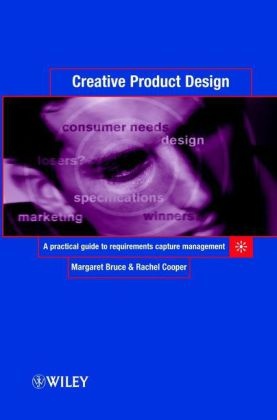Read more
Informationen zum Autor About the Authors Dr Margaret Bruce is Professor of Design Management and Marketing and Head of Department of Textiles, UMIST. She has written several books and papers on design and innovation and carried out international research programmes in these fields. She has developed courses and run executive programmes in Product Development Management and Design and edits the International Journal of Product Development, Innovation and Management . Dr Rachel Cooper is Professor of Design Management and Associate Head of Research in the School of Art and Design at the University of Salford. She is Chair of the European Design Academy and edits the international journal, The Design Journal . She has published several books and papers in design management, new product development and conducted major research programmes in this field. Klappentext About this Book Defining a process of requirements capture as the 'front end' or 'pre-development' of the product development process is imperative. The front end is a critical phase because once the concept has been defined, then about 80% of subsequent costs will have been committed. Without the requirements capture process, false assumptions regarding customer, technical and other requirements may be made. Such false assumptions lead to errors in the product specification which may only be uncovered later in the process. It does not take much to imagine the impact this has on time and money. With the current focus on achieving quick response, managers worry that more effort expended on requirements capture at the front end will increase the time of product development. However, companies with intensive front end activities spend 40% less time on product development than those that ignore this stage. In addition, companies with an effective requirements capture process gain more profits and revenue from new products than those that do not have an adequate requirements capture process. The writing is on the wall. Zusammenfassung Erfolg oder Mißerfolg eines neuen Produktes kann in einer Vielzahl von Fällen auf den Umfang der "Requirement Capture"-Analyse zurückgeführt werden. Mit ihrer Hilfe werden die Anforderungen und Erwartungen der Verbraucher an das neue Produkt ermittelt, und sie steht am Anfang jeder Forschungs- und Entwicklungsarbeit. Die sehr kostenintensive F&E-Arbeit kann sich im nachhinein als nutzlos erweisen, wenn die ursprünglichen Anforderungen von Kunden und Interessengruppen an dieses Produkt nicht zufriedenstellend beachtet wurden. "Creative Product Design" ist ein praktischer Leitfaden für die effektive Ermittlung von Produktanforderungen, die wiederum Voraussetzung ist für eine erfolgreiche Produktentwicklung. Inhaltsverzeichnis Acknowledgements. Introduction. REQUIREMENTS CAPTURE. New Product Development. Requirements: Ideas, Research and Strategy. Requirements: Market Research Tools and Techniques. CAPTURING AND MANAGING REQUIREMENTS CAPTURE IN PRACTICE. Introduction to the Case Studies. Colossus Case Study. Vantage Case Study. Bandage Case Study. Construct Case Study. GUIDELINES TO REQUIREMENTS CAPTURE. Requirements Capture Process. Integrating Requirements Capture with Product Development. References. Index....

